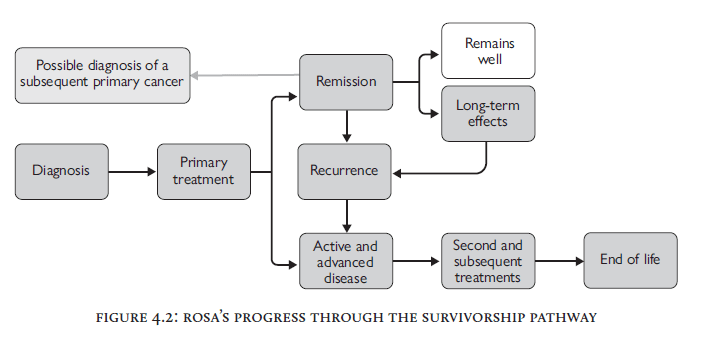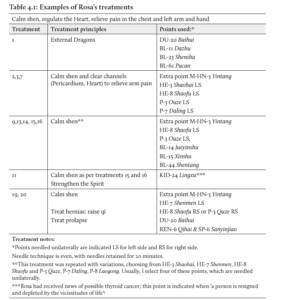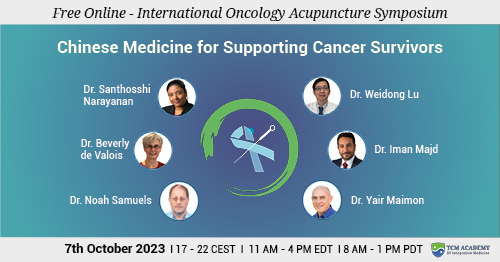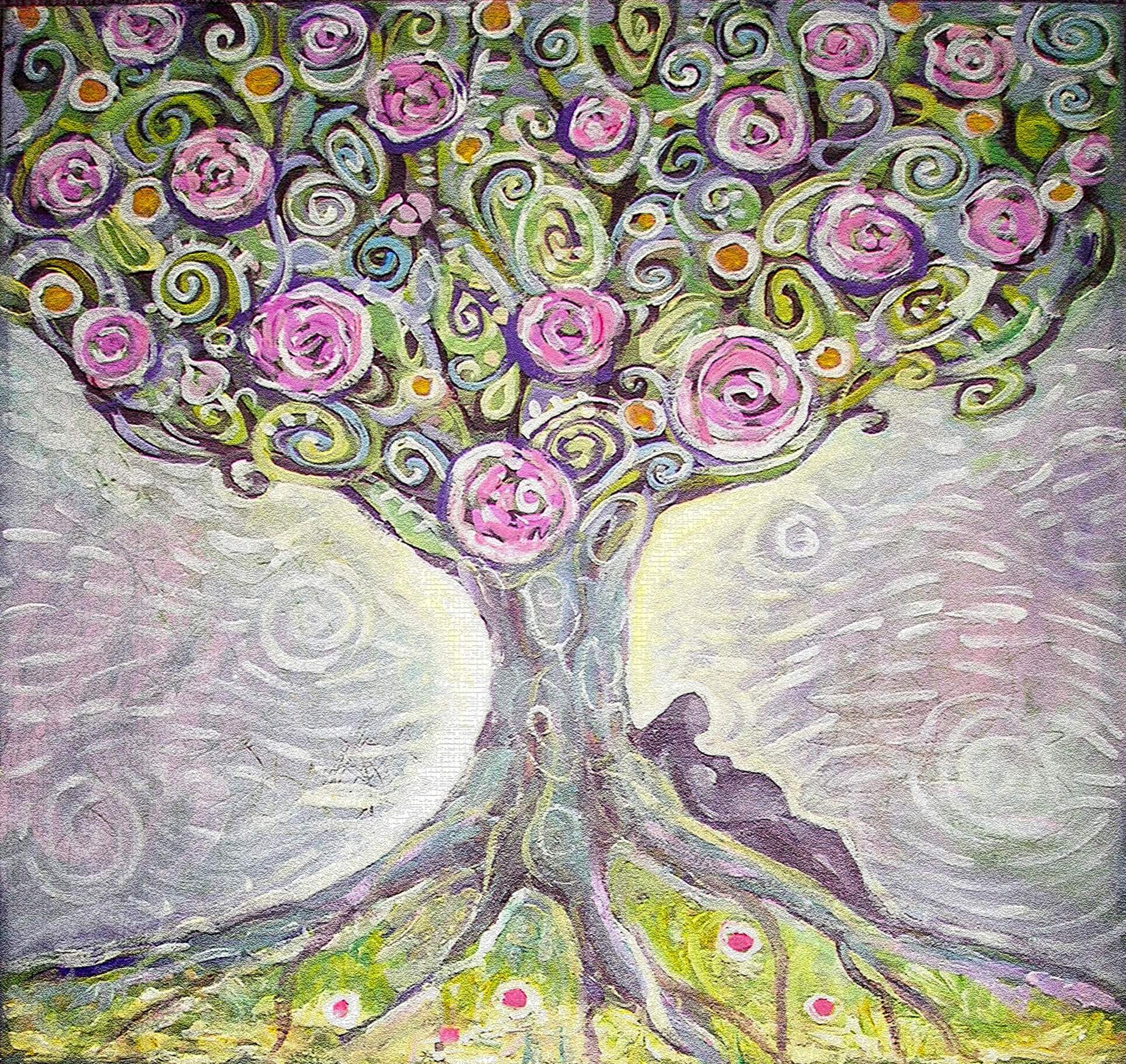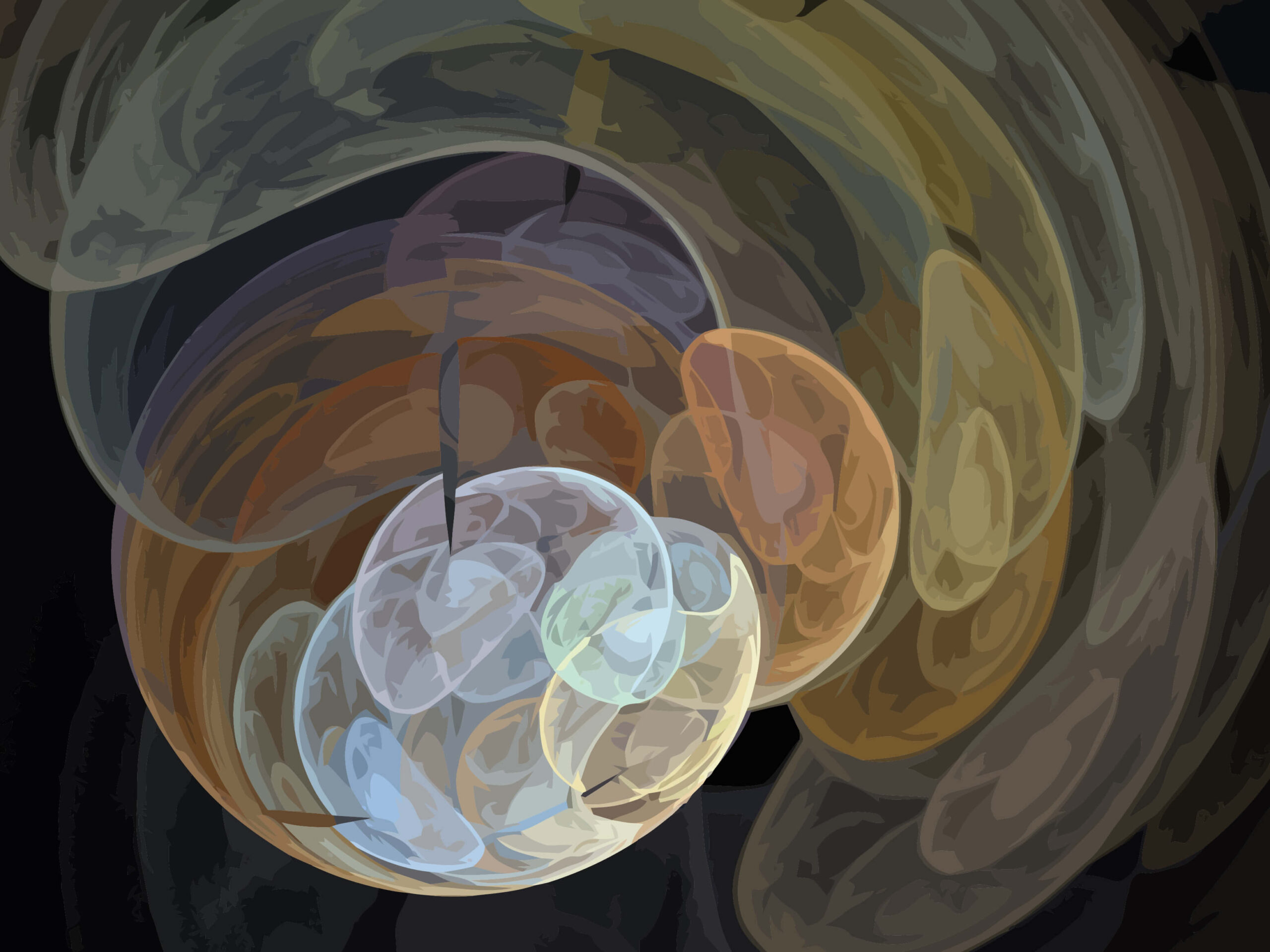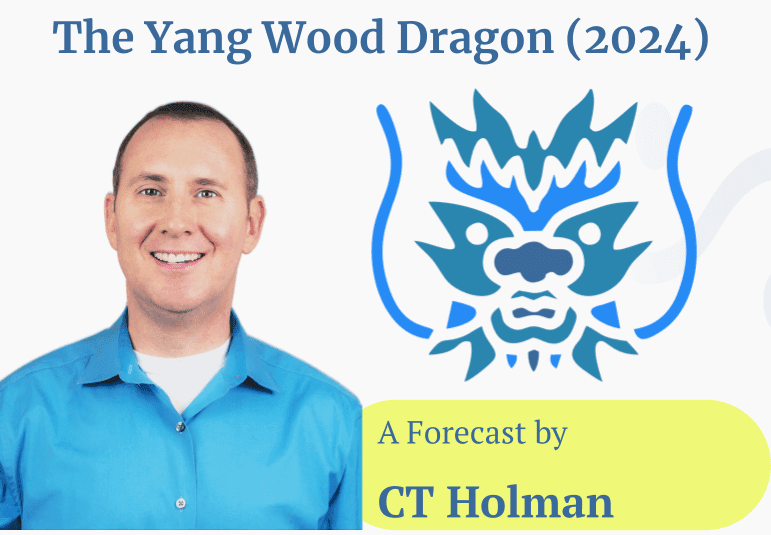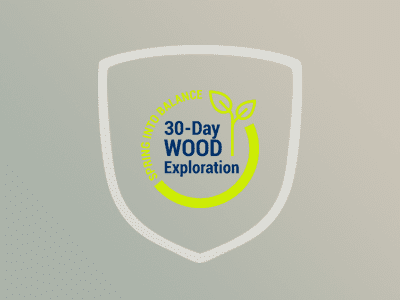Offering Complex Patients a
Simple Piece of Heaven
Excerpt from Chapter 4 of
ACUPUNCTURE AND CANCER SURVIVORSHIP
by Beverly de Valois
With permission of the author and the publisher, Singing Dragon
Rosa’s case study illustrates the approach of treating a complex presentation using a simple approach.
Rosa was actively involved in writing the original version of this case study published in the European Journal of Oriental Medicine, of which this is an abridged version.32 She gave written consent for publication of her anonymised data, chose her pseudonym, and contributed her written perceptions of acupuncture treatment.
Background
Rosa’s oncologist referred her to the hospital outpatient acupuncture clinic for colorectal cancer survivors in September 2016. Bowel ‘problems’ and anxiety were troublesome consequences of a colorectal anastomosis for Stage II (low risk) sigmoid colorectal cancer two years previously.
Rosa, aged 63, attended for 72 acupuncture treatments over two and a half years, during which she presented with increasingly complex health problems. These included a diagnosis of (possible) thyroid cancer, an aortic valve replacement, onset of Type 2 diabetes, and recurrence and metastatic spread of the primary cancer, for which she had
further surgery and chemotherapy.
An estimated 29% of people with cancer have three or more chronic conditions in addition to cancer.33 Rosa had hypertension, obesity (a body mass index (BMI) greater than 30), and chronic heart disease, three of the five most common long-term comorbidities for people with cancer (the others are mental health problems and chronic kidney
disease). Her pre-existing conditions included asthma and hiatus hernia. Overlying this was her fear of cancer recurrence.
We will meet Rosa again in Chapter 5 to discuss the treatment of the constipation and anxiety for which she was originally referred for acupuncture, and which were well managed to this point.
This case focuses on the nine months following an aortic valve replacement, a very difficult time for Rosa. This was partly due to the after-effects of the surgery, including pain, insomnia, constipation, mood swings, anxiety, and depression.34 Major life events at this time included early retirement and concerns about her aged mother who lived
abroad. Throughout this eventful time, Rosa found acupuncture beneficial and supportive.
Managing post-surgery recovery and chronic anxiety
Resuming acupuncture treatment five weeks after aortic surgery, Rosa reported high levels of anxiety, fear of going to sleep (she needed to keep a light on during the night), and dream-disturbed sleep. Physical symptoms included scar pain and numbness and tingling in her left arm and fingers.
Rosa’s psychological symptoms equate with shen disturbance, characterised by insomnia, agitation, mental restlessness, and anxiety.35 Shen is related to the Heart energy in CM theory, affecting mental activity (including emotions), consciousness, memory, thinking, and sleep.*9
My treatment plan was to calm the shen and regulate the Heart. Points on the Heart and Pericardium channels perform these functions, and also address pain and discomfort in the chest, arm and hand.36 The following points formed the mainstay of Rosa’s treatment, chosen for their dual function of addressing emotional and physical symptoms: HE-3 Shaohai, HE-7 Shenmen, HE-8 Shaofu and P-3 Ouze, P-7 Daling, P-8 Laogong.
As treatment progressed, I gradually added other points such as the back shu points of the Heart and Pericardium channels: BL-14 Jueyinshu, BL-15 Xinshu and BL-44 Shentang.
Extra point M-HN-3 Yintang was used in most treatments for its calming effect.
I used this approach in 13 of the 20 treatments during this period, examples of which are shown in Table 4.1. Variations included:
- Treatment 1, where I used External Dragons post-operatively to restore the shen after the physical shock of surgery (see Chapter 5, Toolkit).
- Other treatments (not shown), to address acute problems, including hip pain, a cold, and breathing difficulties.
- Treatments 19 and 20, to address Rosa’s hernias, using points indicated for prolapse.
This decreased discomfort and enabled Rosa to be more physically active.
Progress through treatment
Tx 1: Rosa reported feeling much better after the External Dragons administered at Treatment 1 and was cheerful and positive.
Tx 2, 3, 7: Pain in the scar and chest were bothersome, as were sensations of numbness along the Pericardium channel and tingling in her wrist and fingers. Constipation returned when she stopped taking the laxatives prescribed post-operatively. Disturbed sleep and anxiety continued, but she managed to sleep without a light on for one night.
To alleviate the pain, I used wrist and elbow points on the Pericardium and Heart channels to clear the channels. These points were also used to address the insomnia and anxiety. By the fifth treatment, Rosa reported she had ‘turned a corner’. Arm sensations were less bothersome, bowel performance had improved, and she reduced her painkillers.
The anxiety was diminishing, and she no longer slept with the light on, although she expressed anxieties about having a car accident on her next trip abroad.
Tx 9: Rosa continued to improve gradually, with minor setbacks. By treatment 9, she was sleeping well with no lights on, and feeling more uplifted. She was physically active, walking daily and doing a cardiac rehabilitation programme of aerobic exercise. She also attended weekly yoga and tai chi classes.
Tx 11: Three weeks later, she was distressed by a diagnosis of possible thyroid cancer. This triggered a significant setback, manifesting in breathlessness and evening palpitations. She returned to sleeping with the light on, and her imagination was pervaded with fears about traffic accidents and other misfortunes. This distress was worsened by a diagnosis of borderline diabetes.
Tx 13–16 and beyond: This period was filled with medical investigations. Rosa felt ‘engulfed by hospitals’, ‘overwhelmed’ by the frequency of appointments, and described her table at home covered with letters from numerous hospital departments.
At treatment 14, she said:
“Three years ago I considered myself a healthy woman, very active…now I feel like I am grabbing the side of a hole to get myself up, and things push me down all the time.”
Rosa felt desperate and I requested a referral from her medical team for counselling. She found acupuncture supportive during this turbulent period, writing:
“When I was first introduced to acupuncture I did not know what to expect but I was only too happy to try it out as I wanted to achieve some improvement in my bowel movements and stop using laxatives … I am now fully supportive of acupuncture and would strongly recommend it to anyone … The benefits of this treatment are endless.
My bowel movements have improved beyond recognition and without the aid of any laxatives. Breathing has also improved and I have also gained a general feeling of calmness.”
Her oncologist also noted the difference, writing:
“She has found the acupuncture extremely helpful and it seems to have regularised her bowels quite effectively, so she is coping much better with that aspect of things and it also seems to keep her rather calmer.”
Longer-term follow-up
Rosa, a vibrant, determined woman, was diligent in observing good health practices. Her struggle with the consequences of cancer and its treatments, the increasing burden of other health conditions, and cancer recurrence with metastases continued. Acupuncture was clearly supportive in helping her cope with increasingly complex health issues.
Sadly, this acupuncture clinic ended. In our final appointment, she said that acupuncture had helped in great moments of stress – the heart surgery and the cancer recurrence. That it had normalised her bowel functions was ‘a gift from heaven’. She knew she would always sleep well on the night of treatment, and her breathing would improve.
Conclusion
Rosa’s journey following initial cancer diagnosis and treatment was not towards better health and is traced by the shaded boxes in Figure 4.2. She experienced metastatic spread, had surgery and chemotherapy, and died recently. She once remarked that ‘cancer loves me more than I love it’. In the face of these challenges, a simple approach to acupuncture treatment helped her on many levels. I was privileged to be able to support her.
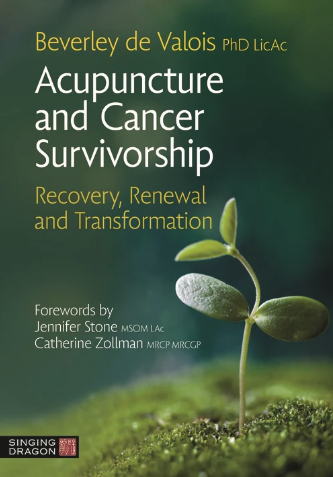
Read the whole Chapter or get the book
The author, along with the publisher Singing Dragon, has kindly shared an entire chapter for those eager to explore their book further. It’s an excellent opportunity to dive deeper into the subject matter and expand your understanding.
Use the code – TCMACS10 – to get 10% off the book. This can be used at www.singingdragon.com. This discount is valid until the end of September. It cannot be used in conjunction with any other offer.







